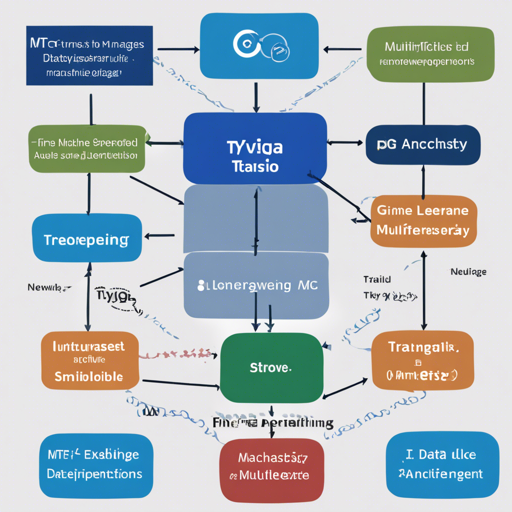The world of natural language processing (NLP) is a fascinating landscape where multilingual models are becoming crucial. One such model is Google’s mT5-base, a transformer that has been fine-tuned on the TyDiQA dataset for multilingual question answering tasks. In this article, we will guide you through the process of using mT5, particularly focusing on utilizing it with the TyDiQA dataset.
Understanding mT5 and TyDiQA
mT5, or Multilingual T5, is a pre-trained model that has successfully learned to generate text in over 100 languages by training on the mC4 corpus. This model is like a sponge that absorbs information from various languages and enables applications in numerous linguistic contexts.
On the other hand, the TyDiQA dataset comprises 204,000 question-answer pairs from 11 diverse languages. Consider it a diverse garden; the more varied the plants (or languages) you cultivate, the richer the ecosystem (or model performance) becomes! Utilizing both mT5 and the TyDiQA dataset together allows you to harness the richness of multilingual understanding.
Getting Started with mT5 and TyDiQA
Follow these steps to fine-tune mT5 on the TyDi QA dataset for your multilingual question-answering needs:
Prerequisites
- Python 3.x installed
- Transformers library from Hugging Face
- Pytorch equipped environment
Installation Steps
pip install transformers torchLoading the Model and Tokenizer
Let’s load the mT5 model and tokenizer:
from transformers import AutoModelForCausalLM, AutoTokenizer
import torch
device = torch.device("cuda" if torch.cuda.is_available() else "cpu")
tokenizer = AutoTokenizer.from_pretrained("Narrativa/mT5-base-finetuned-tydiQA-xqa")
model = AutoModelForCausalLM.from_pretrained("Narrativa/mT5-base-finetuned-tydiQA-xqa").to(device)Creating the Response Function
To interact with our model, we need to create a function that generates responses based on questions and contexts:
def get_response(question, context, max_length=32):
input_text = f"question: {question} context: {context}"
features = tokenizer([input_text], return_tensors="pt")
output = model.generate(input_ids=features["input_ids"].to(device),
attention_mask=features["attention_mask"].to(device),
max_length=max_length)
return tokenizer.decode(output[0])Testing the Model
Now that our function is ready, let’s see it in action:
context = "HuggingFace won the best Demo paper at EMNLP2020."
question = "What won HuggingFace?"
response = get_response(question, context)
print(response)Troubleshooting Common Issues
During the implementation of the above steps, you might encounter some common issues. Here’s how to troubleshoot them:
- ImportError: Ensure that you have installed all necessary packages and are using the right Python environment.
- CUDA-related errors: If CUDA is not functioning, ensure your drivers are up to date and PyTorch is installed with CUDA enabled.
- Model not loading: Verify that you have an active internet connection and that the model name is spelled correctly.
For more insights, updates, or to collaborate on AI development projects, stay connected with fxis.ai.
Conclusion
By following these steps, you can effectively fine-tune and deploy the mT5 model for multilingual question answering using the TyDiQA dataset. As we advance towards a world where language diversity is celebrated, such models will play a pivotal role in breaking down barriers.
At fxis.ai, we believe that such advancements are crucial for the future of AI, as they enable more comprehensive and effective solutions. Our team is continually exploring new methodologies to push the envelope in artificial intelligence, ensuring that our clients benefit from the latest technological innovations.

